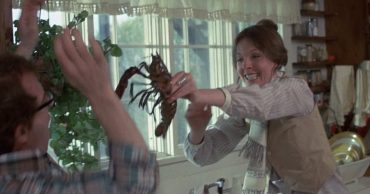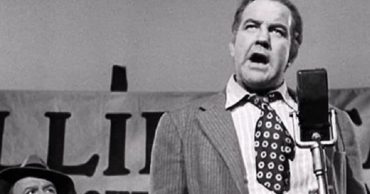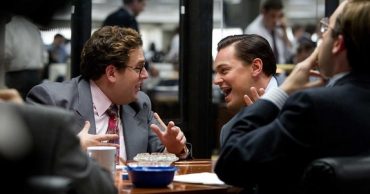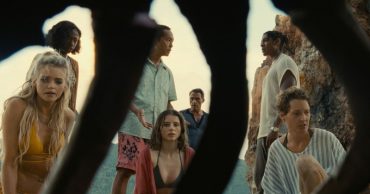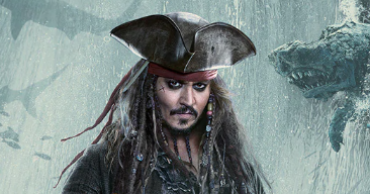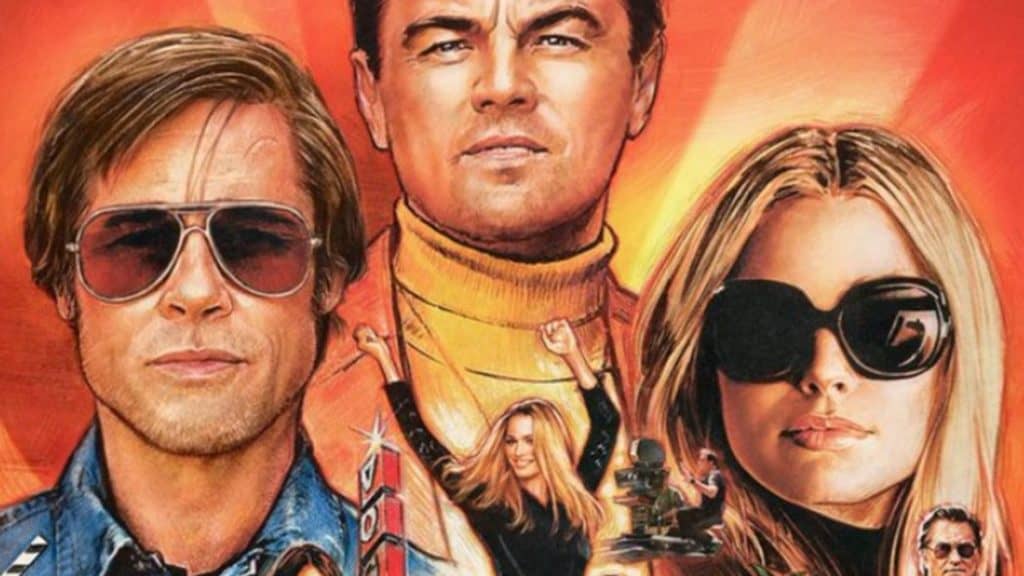
Once upon a time… in the Western storytelling tradition, these four words evoke so much that it’s almost impossible to parse through everything that immediately starts coursing through your head when you hear them. Nearly all of us, I imagine, immediately conjure up a child’s bedtime story: fairytales and knights in far-off lands slaying dragons and rescuing damsels in distress. Perhaps your first go-to is their modern-day equivalent, the endlessly deep library of Disney-branded princess tales. Or maybe your mind immediately goes to all of the other times that movies have played with this naming convention in the part: Spaghetti Westerns like Sergio Leone’s Once Upon a Time in the West (1968), Crime Dramas like Leone’s later Once Upon a Time in America (1984) or martial arts epics like Tsui Hark’s Once Upon a Time in China (1991). Maybe you instead go for playful reworkings like the opening text scrawl to George Lucas’ Star Wars (1977): “a long time ago, in a galaxy far, far away…”
Given Tarantino’s eclectic filmography, which stretches back all the way to 1992’s Reservoir Dogs, I wouldn’t be surprised if the title is meant to work with all of these differing associations with the phrase, as well as with others I’ve yet to come up with. This is, after all, the man whose cinematic point of reference across his nearly thirty-year career has ranged from the French New Wave (Reservoir Dogs, Pulp Fiction) Spaghetti Westerns (Kill Bill, Django Unchained, The Hateful Eight), Blaxploitation films (Jackie Brown, Django Unchained), Grindhouse flicks (Death Proof, Pulp Fiction, Kill Bill), Rape Revenge movies (Kill Bill), Samurai and Kung Fu imports (Kill Bill), WWII schlock (Inglourious Basterds), mid-century Hollywood (Django Unchained, Pulp Fiction, Inglourious Basterds) and historical revisionism (Inglourious Basterds). And while he wears his inspirations on his sleeve, his well of interests is so deep and so particular that it unsurprisingly takes a while to unspool exactly what’s going on in each of his movies. I, for instance, have rarely ever liked one of his movies the first go around, but have ended up loving every last little thing he’s put on screen… well, give enough time. One does not rush in to say what their first impression of a the latest Tarantino movie is, as, almost inevitably, it will be the wrong one.
And, in many ways, Once Upon a Time in Hollywood (2019) is the apotheosis of Tarantino’s decades-spanning career: even more so than Kill Bill (2003-2004) seemed to be, and those movies were a perfectly measured slurry of every last little thing that’s ever rattled around in the Gen-X wunderkind’s skull. This is, at once, his most mature, most restrained, most acutely repellent (to his long-time fans), most broadly accessible (to what will surely be legions of incoming dans) and most thoroughly Tarantino production to date: a culmination of everything that Kill Bill was trying to be and everything that Inglourious Basterds succeeded at being.
But, I suppose, I am getting ahead of myself. What is the movie even about?

Once Upon a Time in Hollywood opens in early 1969: a period of profound and rapid change in Hollywood — to say nothing of American — history. Thanks to the culminating pressures of the stifling overreach of the mid-century American censorship standards (collectively referred to as the Hays Code), the creative freedom provided by increasingly popular independent and foreign features, the rise of the hardcore Rock scene, intense competition from increasingly ubiquitous television broadcasts and the complete inability of the lumbering Hollywood machine to adapt to the changing times, the old Hollywood studio system is rapidly crumbling. Studios are going belly-up, talent is abandoning ship for TV or foreign markets and the youth culture at large is “turning on, tuning in and dropping out” of society as a whole. It is a rapidly changing world whose eventual form is impossible to discern, and it is here that we meet our protagonists.
The film follows the intersecting lives (mostly during one seemingly inconsequential day in the lives) of down-and-out actor Rick Dalton, his best-buddy stunt man Cliff Booth, rising star Sharon Tate and the portentous Manson Family. The narrative follows them as they try to make sense of their lives in this uncertain environment: Rick’s raging against an entertainment industry that no longer seems to know what to do with him, Cliff’s looking back on the mistakes that lead him to his current lot in life, Sharon Tate’s eager anticipation for the boundless promise of the coming decade and that Manson Family’s apocalyptic philosophy of Helter Skelter… all culminating on the fateful events of August 9, 1969, when 8-month pregnant Sharon Tate and her house guests were brutally murdered by Manson’s followers in their Cielo Drive residence.
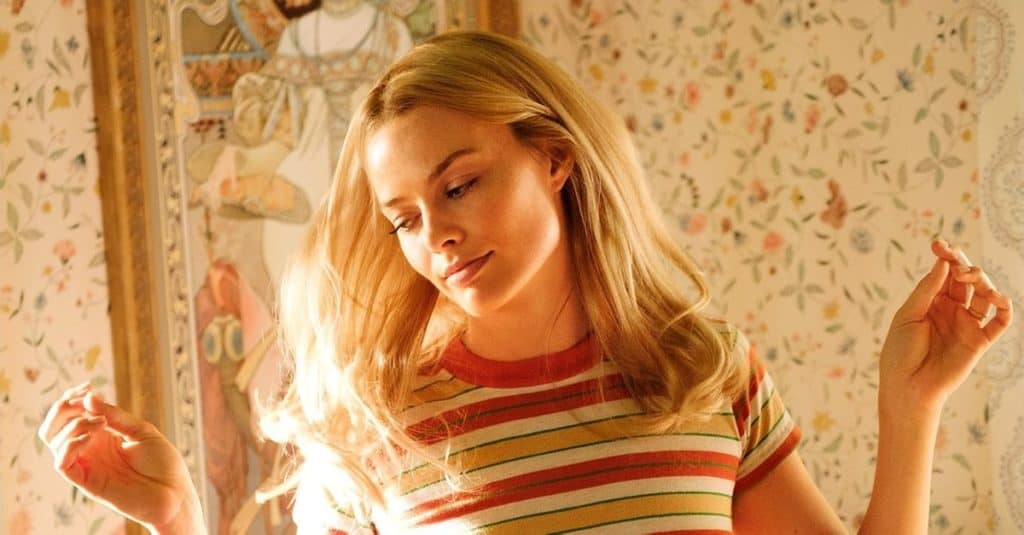
Once Upon a Time in Hollywood is a lot of things, as simple is not one of them. It is a multi-latticed treatise on everything from the failed promise of the 1960s, the dark opening of the 1970s, the dissolution of old Hollywood, the rise of New Hollywood and every last theme, competing influence and stylistic nuance of his preceding eight films. Fully unravelling everything that’s going on in the film will take a Hell of a lot more than one comparatively brief review, and if you’re just here to figure out whether you should go and see it… yeah, you should. Stop reading right here, right now, drive out to your local multiplex, buy a ticket, and watch the movie, because it is not just guaranteed to be one of the year’s most hotly-debated talking points, but it is absolutely the kind of movie that you should see as fresh as possible. The movie demands a certain foreknowledge of the infamous Manson murders and those who carried them out, while at the same time playing with it in the way that only Tarantino seems willing (if not capable) of doing. And that absolutely demands engaging it blind and on its own terms. So if you have not seen the movie, seriously, stop reading and watch it. You can thank me for that one later.
I think that the best take I’ve heard concerning this film yet actually comes from a pretty mixed take on the whole thing. Once Upon a Time Tarantino is NOT the same Tarantino that made Reservoir Dogs. He’s not the same Tarantino that shot Pulp Fiction. He’s not the same Tarantino who worked on Jackie Brown, Kill Bill, Grindhouse, Inglourious Basterds, Django Unchained or The Hateful Eight. There are, of course, shades of each of those Tarantinos in here, each in turn, but this is, ultimately, a new Tarantino that we’ve not seen before. He’s a more mature Tarantino — restrained — given to his usual bouts of profanity, explosive outburst and ultra-violence only occasionally. His usual themes and inspirations, while present, are remixed here into something else entirely: something that we’ve not seen from him in the past. It’s bound to turn off a lot of people who come in expected vintage Tarantino. But this is not vintage Tarantino. This is something new.

My typical complaint when it comes to Tarantino is that he has always been a far better writer than he is a director. Don’t get me wrong, he’s a brilliant director — easily one of the most original and interesting we have working today — but he is a prodigious writer of immense talent and he never seems to know when to cut himself off: when a scene is supposed to end and when he simply lets things go on way, way too long because he’s having way, way too good of a time writing all of it down. It has always been obvious to me where his chief most interests and talents both lay, and it wasn’t planted squarely behind the lens of a camera. In Once Upon a Time in Hollywood, however, the opposite is refreshingly true. For the first time in his entire career, it seems, he’s found the where and when of every scene: where it fits in the larger narrative and when it’s well and truly time to move on to the next one. His dialog was, at long last, refined in service to a larger narrative and didn’t merely exist for its own sake, as a showcase for its author’s considerable literary skill. And, even then, that narrative was in service to a collection of real-feeling, lived-in characters that were simply allowed to exist on the screen, rather than having the genre-heavy business of doing something imposed onto them.
This, of course, will not sit well with everybody. Those who were first introduced to the man behind the camera by something like Pulp Fiction might not know what to make of this new creature in front of them. Artists, though, grow. They evolve. They change. Their later experiments will not always resemble their earliest hits. But, for my money, this is nearly the best movie Tarantino has ever made (the first being Basterds) and his most refreshingly different movie yet. If this is where Tarantino has ended up after nine films, I desperately hope that he rethinks his insistence of stopping after completing ten.
Rating: 5/5
 Follow Us
Follow Us
